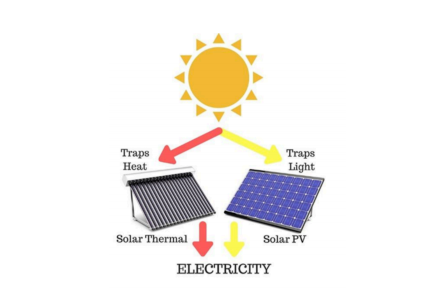Despite a growing global interest in solar energy, many homeowners do not fully understand
how solar panels work. Thanks to the sun’s abundant energy, solar panels will continue to
generate power for years, making home solar systems increasingly popular.
Let’s explore what makes a solar panel work and the step-by-step process that turns
sunlight into usable energy to power homes.
What Is Solar Energy?
Solar energy is the radiant light and heat generated by the sun and converted into usable
power through technologies like solar panels. Unlike finite fossil fuels, solar energy is a clean,
renewable, and environmentally friendly resource for powering our world.
Solar energy has many advantages, which is why many people are switching to it. It doesn’t
produce greenhouse gases during generation, helping to combat air pollution and climate
change. Additionally, solar panels work nationwide, reducing reliance on foreign energy
sources and enhancing local energy independence.
How Is Solar Energy Used?
Beyond home use, solar panels have several other applications:
Rental properties
Homeowners can install solar panels to increase property value and offset energy bills.
Commercial and industrial buildings
Solar panels can reduce operating costs and enhance sustainability in commercial spaces.
Utility-scale applications
Solar farms and power plants can generate vast amounts of energy.
Off-grid and remote properties
Solar energy is ideal for areas with limited access to traditional grid electricity, like isolated
communities, cabins, or campsites.
Agricultural applications
Solar panels can power irrigation systems, barns, and other farm equipment.
Community solar
Shared energy projects allow city or town residents to invest in and benefit from a single solar energy system, usually a solar panel farm.
As solar technology advances, there will be even more ways to utilize solar energy.
How Does a Solar Panel Work?
Solar panels consist of photovoltaic cells that convert sunlight into usable energy through the
photovoltaic effect.
What Is the Photovoltaic Effect?
A photovoltaic cell uses positively and negatively charged layers to create an electric field.
When sunlight hits the cell, it energizes and releases electrons. The negatively charged
electrons are drawn to the positively charged side, creating an electrical current. This current
is vital in converting solar energy into electricity to power a home’s lights, appliances, and
more.

What’s the Difference Between Solar PV and Solar Thermal?
Solar PV systems convert sunlight into electrical energy, while solar thermal systems absorb
the sun’s heat to generate hot water and space heating. Solar PV systems are more versatile,
last longer, and are more effective year-round

How Do Solar Panels Work on a House?
Understanding the process of how solar energy powers a home provides better insight into
its efficiency and sustainability. Here’s a step-by-step look:
- The Solar Panel Detects Solar Energy
Solar panels are installed on the roof in an optimal position and angle for maximum sun
exposure. This placement ensures photovoltaic cells can effectively detect and capture
sunlight.
- The Cells Produce an Electric Current
When sunlight reaches the cells, photons transfer energy to the semiconductor material,
typically silicon. This releases negatively charged electrons, creating a direct current (DC), a
single-direction electrical flow needed for the next step.
- Generated Electricity Is Converted to Usable Energy
The direct current generated by the solar panels is converted into alternating current (AC) by
an inverter. AC is the standard form of energy used in homes and businesses. Any excess
energy generated can be stored in a solar energy storage system or sent back to the grid for
credits on an energy bill through net metering.
- Converted Electrical Energy Is Supplied
The inverter connects to the circuit breaker, which distributes the alternating currents
throughout the home, powering appliances, lighting, and other electrical devices.5. Monitor Energy Usage
A monitoring system like the AMPS home energy management system provides real-time
data on energy production and usage, helping users make informed decisions about their
energy consumption.
Contact Us
If you are interested in installing AMPS solar panels or have questions about solar energy, our
team is here to help. We are dedicated to developing high-quality solar panels, providing
outstanding solar solutions, and delivering exceptional customer service. Browse our
complete solar energy solutions, including solar panels, home energy storage, and energy
management, or contact us to discuss designing and installing a customized home solar panel
system. Feel free to reach out to AMPS for any solar-related inquiries.






Leave a comment